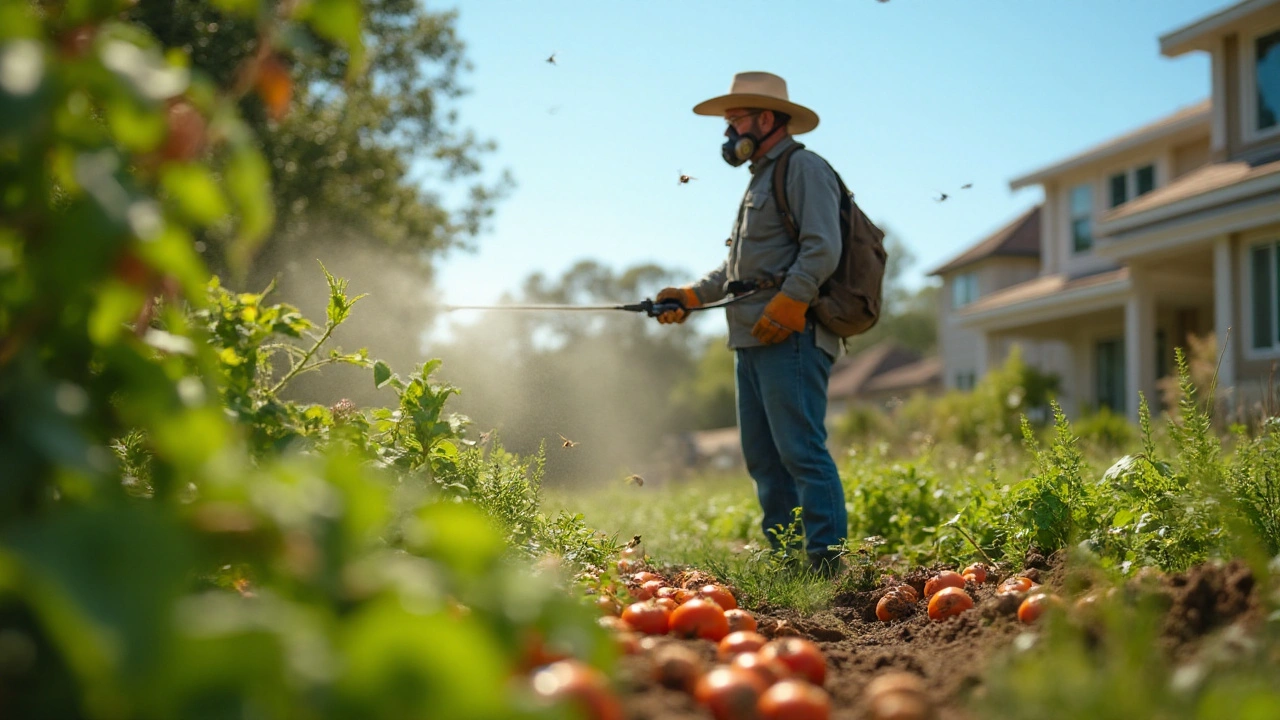Insecticide Basics: What They Are and When to Use Them
When bugs start ruining your garden, kitchen or outdoor space, the first thing most people think of is an insecticide. In simple terms, an insecticide is any substance that kills insects or keeps them from feeding. They range from household sprays you can buy at the store to professional‑grade formulas used on farms. Knowing the difference between these options helps you avoid waste, protect your health, and keep the environment safe.
Before you reach for a bottle, ask yourself a few quick questions: What kind of pest are you dealing with? Is it a one‑time problem or a recurring issue? Do you have kids or pets around? The answers will point you toward the right type of product and the proper way to apply it.
Common Types of Insecticides
Insecticides fall into two broad camps – chemical (synthetic) and organic (natural). Chemical insecticides include well‑known names like pyrethroids, organophosphates and neonicotinoids. They work fast and are effective against a wide range of bugs, but they can also affect beneficial insects, pets and even humans if not used correctly.
Organic insecticides rely on natural compounds such as neem oil, pyrethrum (derived from chrysanthemum flowers) and spinosad. These tend to break down quicker in the environment, which means lower long‑term residue. They might need a few more applications to see the same result as a synthetic spray, but they are generally safer for kids, pets and pollinators.
Another useful category is baits and traps. Instead of spraying, you place a lure that draws insects in and either poisons or traps them. This method reduces overall chemical use and works well for ants, cockroaches and some beetles.
Safe Use and Choosing the Right Product
When you finally pick an insecticide, read the label carefully. Look for clear dosage instructions, protective gear recommendations and any warnings about pets, children or food contact. Always wear gloves, a mask if the label suggests it, and keep the area well ventilated.
Start with the lowest effective dose. Many people think “more is better,” but overdosing can cause skin irritation, respiratory issues, or even make the pest resistant. Apply only to the affected area and avoid spreading the spray to plants you intend to eat.
If you’re leaning toward an organic option, check the active ingredient. Neem oil works best on soft‑bodied insects like aphids and whiteflies, while pyrethrum is good for flies and beetles. For indoor battles, look for EPA‑registered products that are labeled for indoor use to ensure they meet safety standards.
Keep insecticides out of reach of children and pets. Store them in a locked cabinet or high shelf and label the container with the date you opened it. Most products lose potency after a year, so discard any that are past their recommended shelf life.
Finally, consider non‑chemical alternatives before reaching for a spray. Simple actions like sealing cracks, removing standing water and using sticky traps can dramatically cut down pest numbers. Combining good sanitation with targeted insecticide use gives you the best results while keeping risks low.
In short, an insecticide is a powerful tool when you know what you’re dealing with, choose the right type, and follow safe application steps. By matching the product to the pest, using the minimum effective amount, and keeping safety first, you’ll get rid of unwanted bugs without creating new problems.
- July 30 2025
- 12 Comments
- Daryl Gardner
Permethrin for Gardeners: How to Keep Plants Pest‑Free Safely
Learn how gardeners can use Permethrin effectively, apply it safely, avoid harming beneficial insects, and integrate it into an IPM plan for pest‑free plants.
- Health & Medicine (103)
- Health & Nutrition (8)
- Caregiving & Dementia (2)
- Health & Wellness (2)
- Environment & Climate (1)
Categories
- December 2025 (24)
- November 2025 (22)
- October 2025 (27)
- September 2025 (38)
- August 2025 (5)
- July 2025 (4)
Archives
- side effects
- medication side effects
- generic drugs
- dosage
- online pharmacy
- gut health
- generic substitution
- safety and side effects
- natural antioxidant
- coping strategies
- hypertension
- immunosuppressants
- mental health
- medication adherence
- drug safety
- NTI drugs
- narrow therapeutic index
- combination therapy
- black box warning
- autoimmune disease
